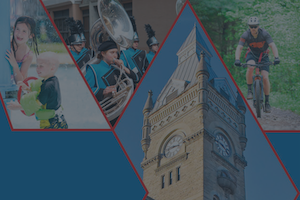Are free-range lunch periods a good idea?
Lunch period has tortured high school students for generations.
Not so for Rachel Kirkpatrick, a 2017 graduate of Bethesda-Chevy Chase High School outside Washington, D.C., for whom lunchtime was downright pleasant. On warm days, she and her friends would eat lunch while lolling on a large lawn next to school. On other days, they'd venture into the neighborhood, picking up lunch at, say, Chipotle or the local bagel place. “For me, it was really great because I don't like to be cooped up inside,” said Kirkpatrick, who will be a freshman at the University of Maryland this fall. “It gave me a little mental break.”
The 2,600-plus students at Bethesda-Chevy Chase High are beneficiaries of the suburban school's open campus policy, which essentially means that students have the freedom to leave school grounds without getting a guardian's permission.
Many high schools around the country give students varying degrees of freedom to come and go. It's often up to individual schools to decide; Wootten High School, which, like Bethesda-Chevy Chase, is part of Maryland's Montgomery County School District, is completely closed.
Students at Bethesda-Chevy Chase High are allowed to leave campus only during their 40-minute lunch period. Principal Donna Jones said the school's cafeteria isn't big enough to accommodate the student body. Having restaurants nearby and being in a safe neighborhood help, she said.
Most students respect the rules (as in, they come back for class) and the neighborhood, Jones said. Those who don't lose the open-campus option. “Students who choose to skip class would likely make that choice regardless of whether we had open lunch. It's unfortunate, however, anytime a small number of students who make the wrong choices reflect poorly on our school,” Jones said.
At other schools, only upperclassmen have the freedom to leave campus.
Mamaroneck High School, in suburban New York, allows students to come and go at will throughout the day, meaning students are just as likely to spend their free period at a nearby Starbucks as they are in the library.
Yet having an open campus can be complex — or impossible — for many schools, particularly those in high-crime areas or without off-campus lunch options nearby. Matin Abdel-qawi, principal of Oakland High School in Oakland, Calif., said he has seen concrete benefits from keeping kids on campus during the day; Oakland High has a closed campus, and Abdel-qawi ended an open-campus policy at East Oakland School for the Arts, in one of the city's most impoverished neighborhoods, when he was principal there.
“There were definitely academic and attendance benefits immediately,” Abdel-qawi said. The number of students getting into trouble declined, as did the number of those who reported being robbed or witnessing crimes, he said.
“With a closed campus, students are in a safe environment, there is adult supervision and students enjoying their lunch,” he said. “And we can get students back to class much faster.”
Some administrators have gotten creative.
Kimberly Boldon, principal of Wootten High in Rockville, Md., said that although students have to eat lunch on campus, they can do so wherever they want.
“They are in the hallways; they are in the classrooms. We open up the stadium when it's a beautiful day,” Boldon said. “They are pretty much able to go all over the building.”
<br />













